Azulejos in Lisbon
Azulejos are painted, tin-glazed, ceramic tiles. They have become a typical aspect of Portuguese culture.
The picture above is titled “Sagres” which is the most southerly community in Portugal and the most south-westerly in continental Europe. From there a lot of the Portuguese ships left to explore the world. I found this azulejo at a building close to the Partque Eduardo. Like many buildings in Lisbon in bad condition and closed.
These azulejos depict the southern cross, the battle that let to the Portuguese independence (A Ala dos Namorados) and the Battle of Ourique in 1139 when forces of Portuguese Prince Afonso Henriques defeated the Almoravid Moors.
These azulejos on this building chronicle major historical aspects of Portuguese history. But generally azulejos can be found on the interior and exterior of churches, palaces, ordinary houses, schools, restaurants, bars and even railway stations or subway stations. They constitute a major aspect of Portuguese architecture as they are applied on walls, floors and even ceilings. They were not only used as an ornamental art form, but also had a specific functional capacity like temperature control in homes.
Walking around Lisbon one first recognizes the azulejos as an ornament to frame doors and windows.
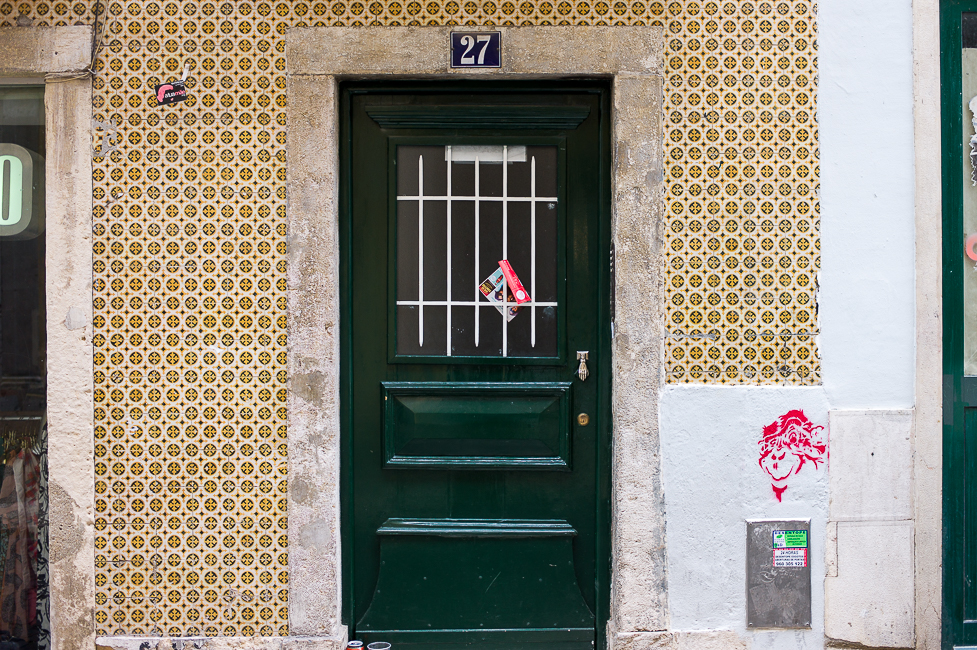
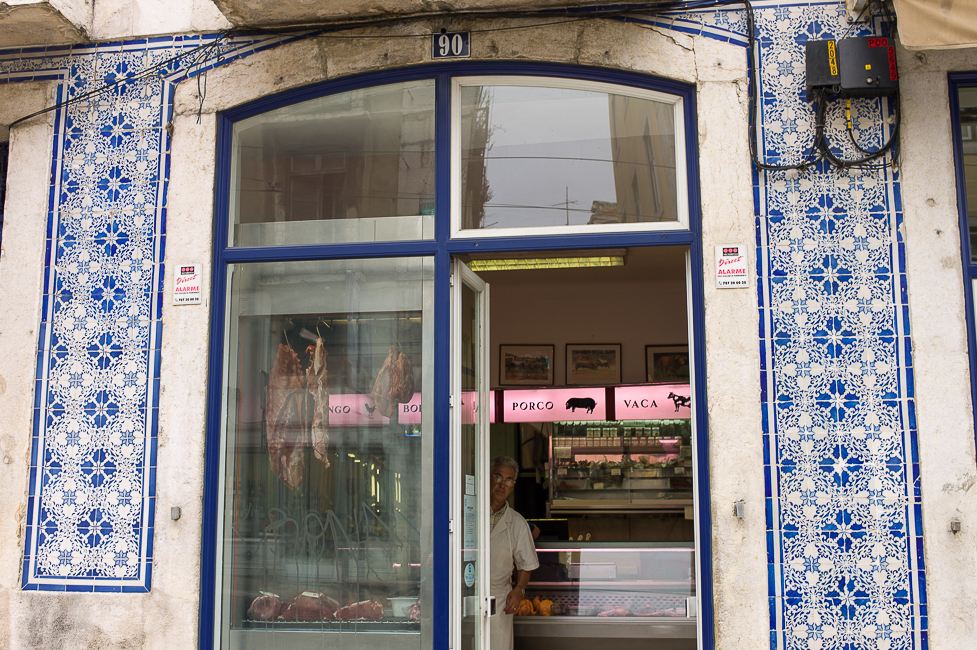
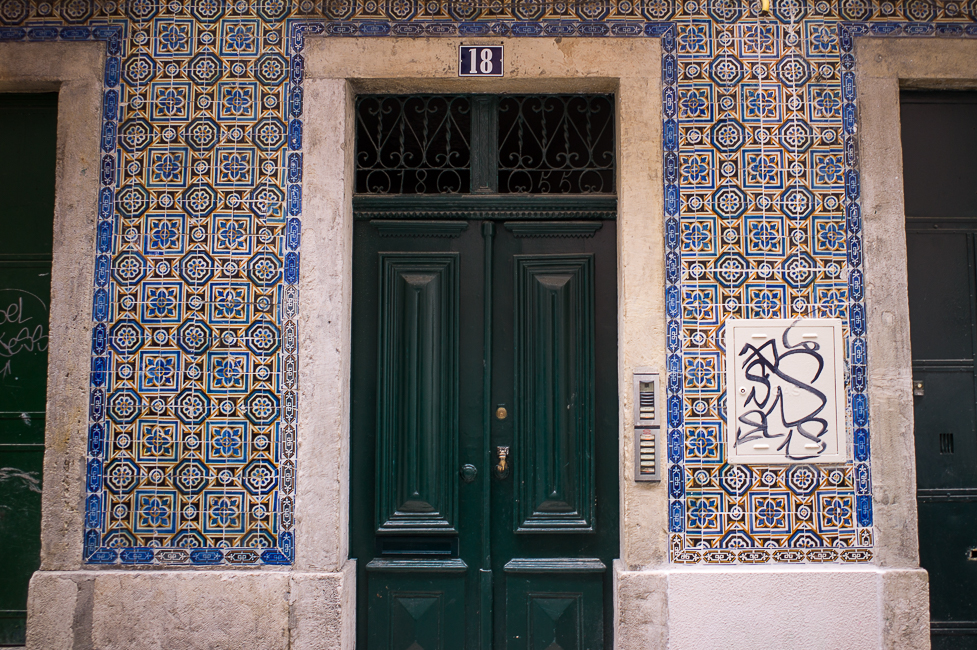
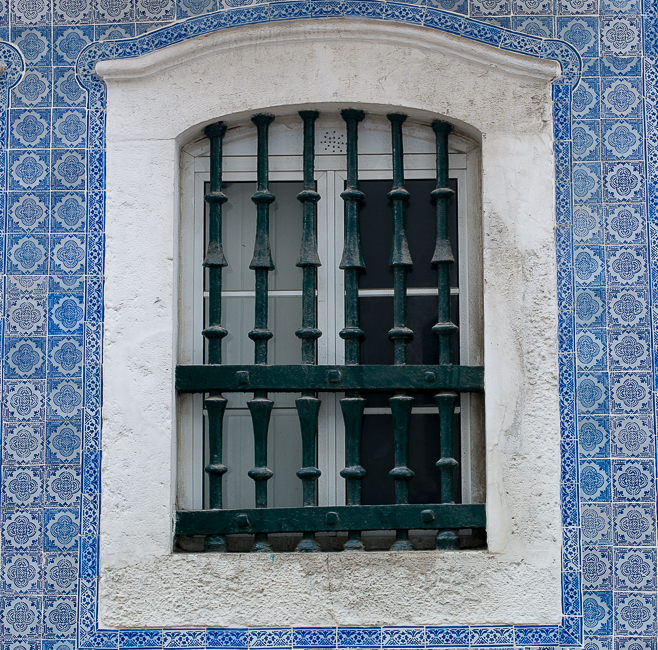
These azulejos are glazed in a single colour and decorated with geometric patterns. They come out of a industrial production with limited artistic character. Because of these patterns they are in the tradition of the earliest azulejos of the 15th century, which were dry-string tiles (cuerda seca) and azulejos alicatados (panels of tile-mosaic) in Moorish tradition.
These two door frames are more artistic, the old one referring to the products sold at the shop, the modern advertising a music bar.
The following pictures show houses totally covered with azulejos, adding character to the city of Lisbon. Three houses in a row covered with tiles was the largest assembly of azulejos I saw.
Sometimes old azulejos at houses have been neglected, painted over or been exposed to graffiti. In other cases they remain as ornaments or are newly added for touristic purposes.
On the flea market old azulejos are sold to collectors , 4 pieces for 10 Euros.
The last chapter of this post shows azulejos at the subway station “Oriente” The entrance to the metro platform and the platforms themselves have huge tile murals designed by some of the best local contemporary artists. Most of the stations have these decorations. Nice to see that the tradition of azulejos lives on with a lot of creativity, from surrealistic motives even up to comic styles…
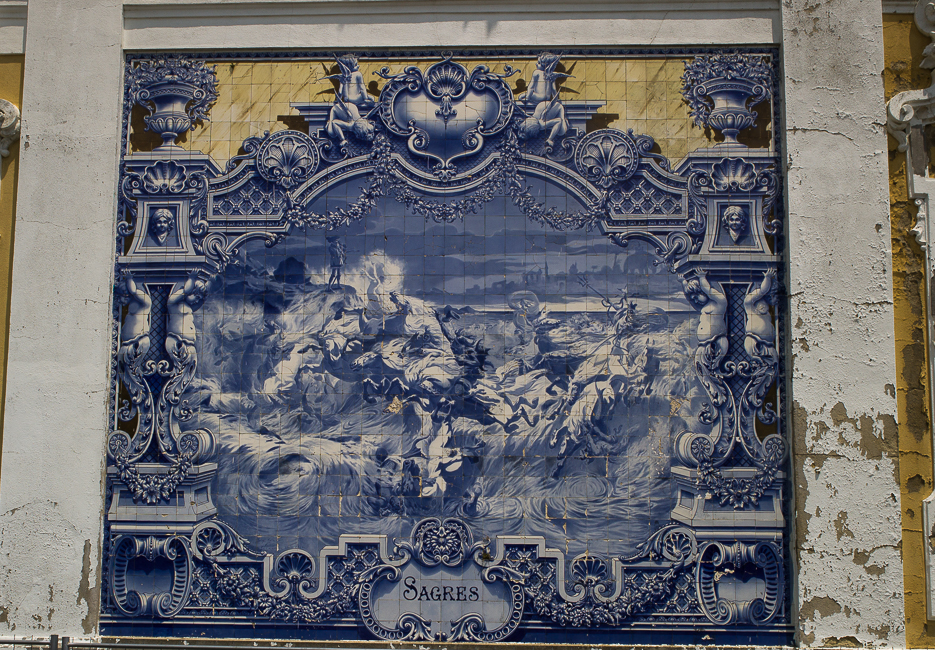
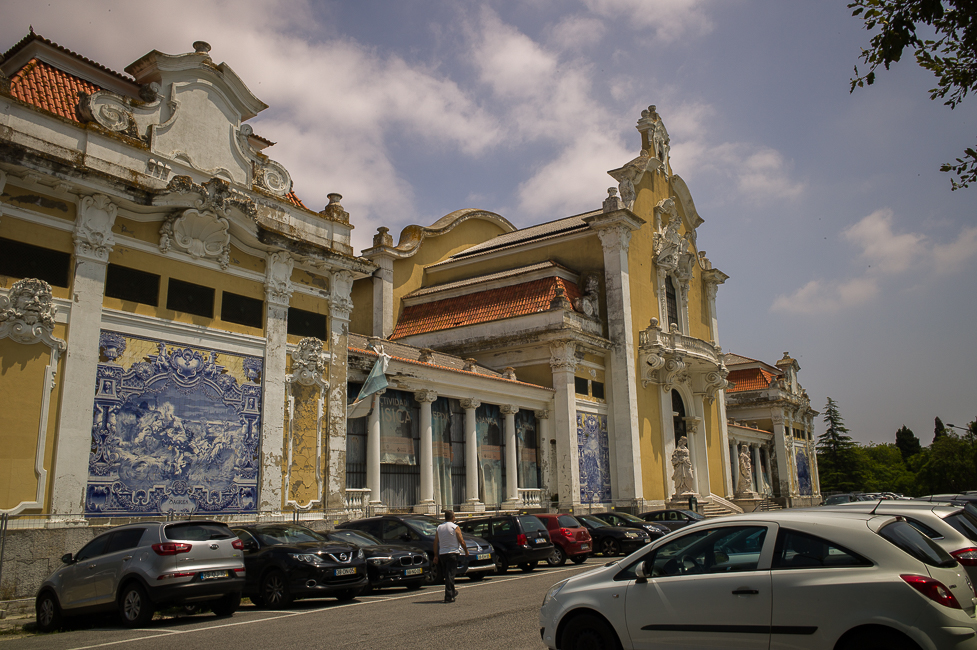
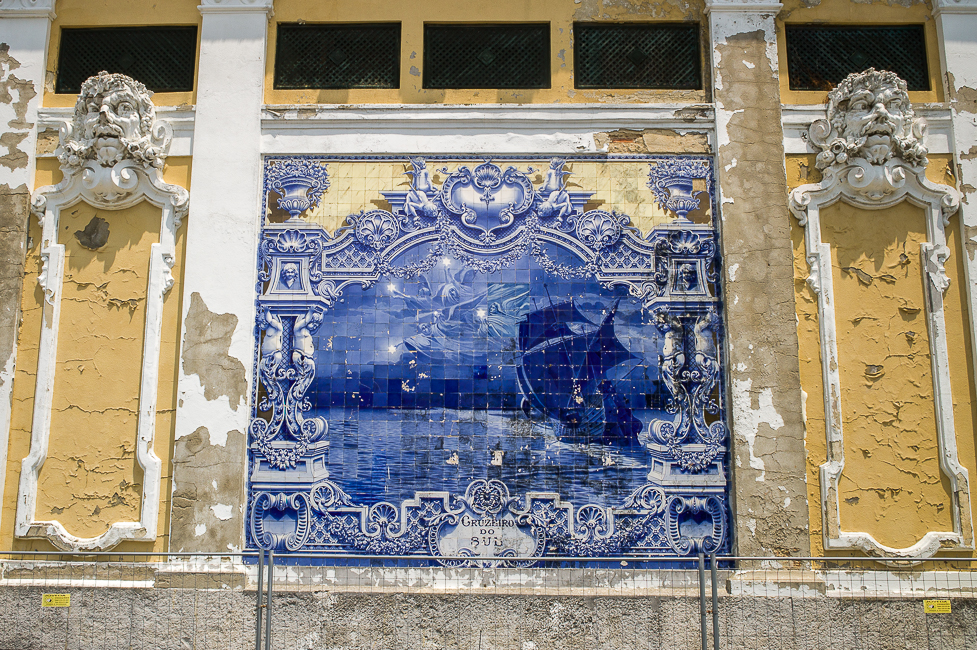
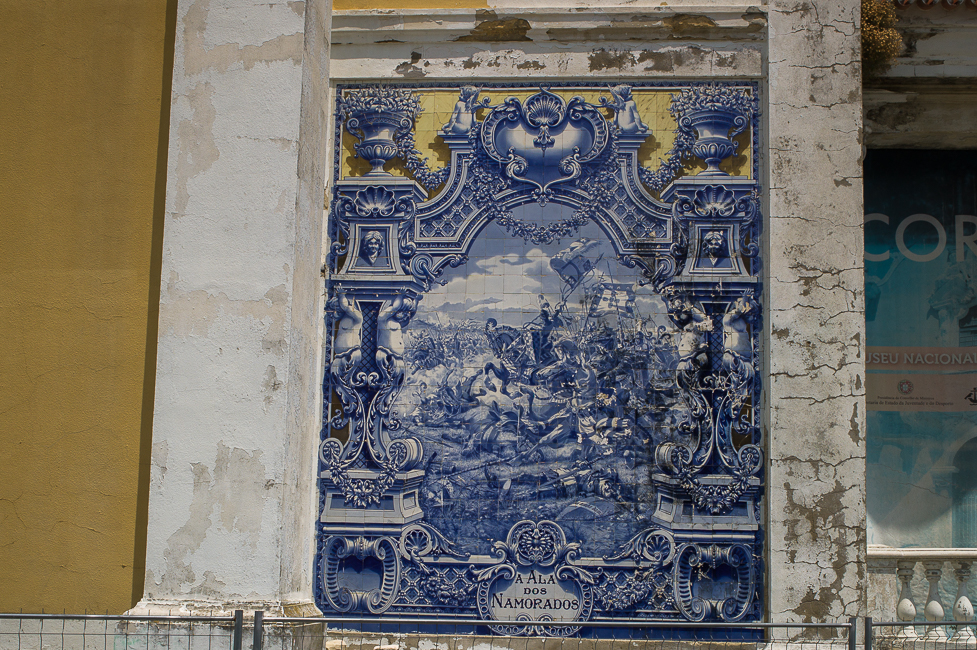
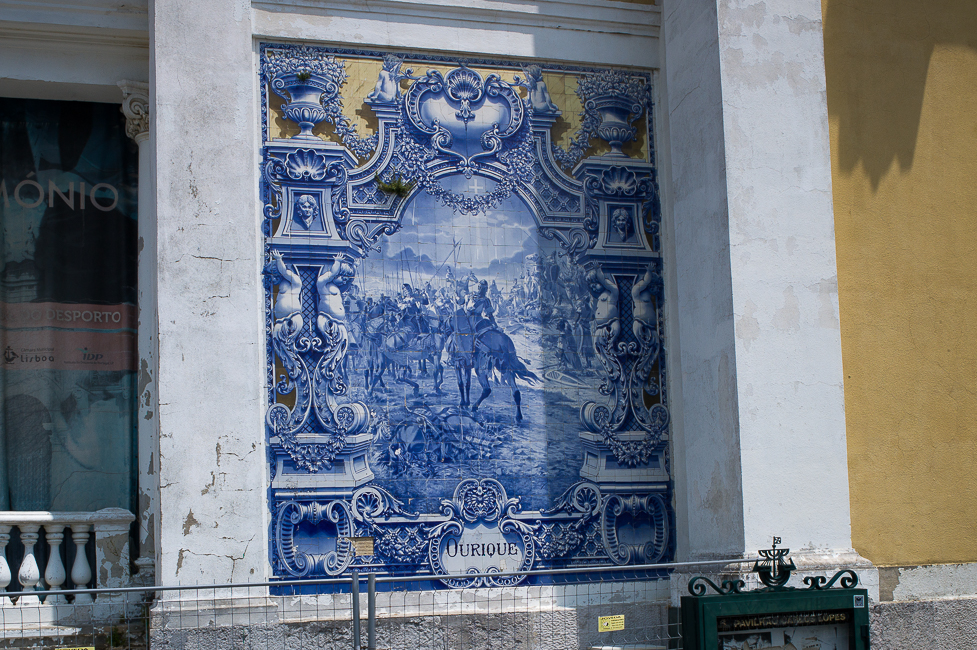
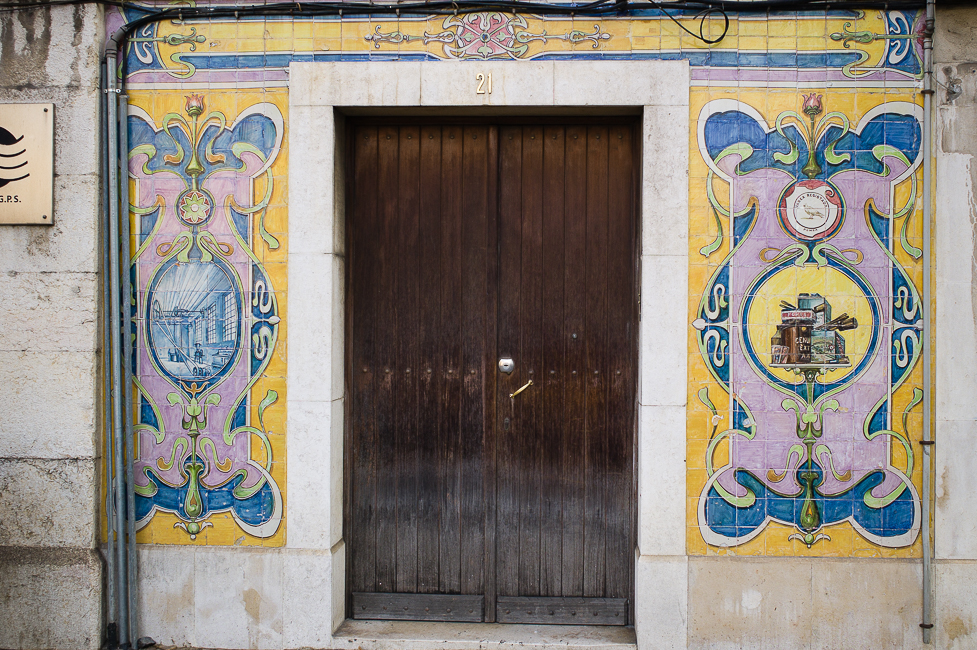
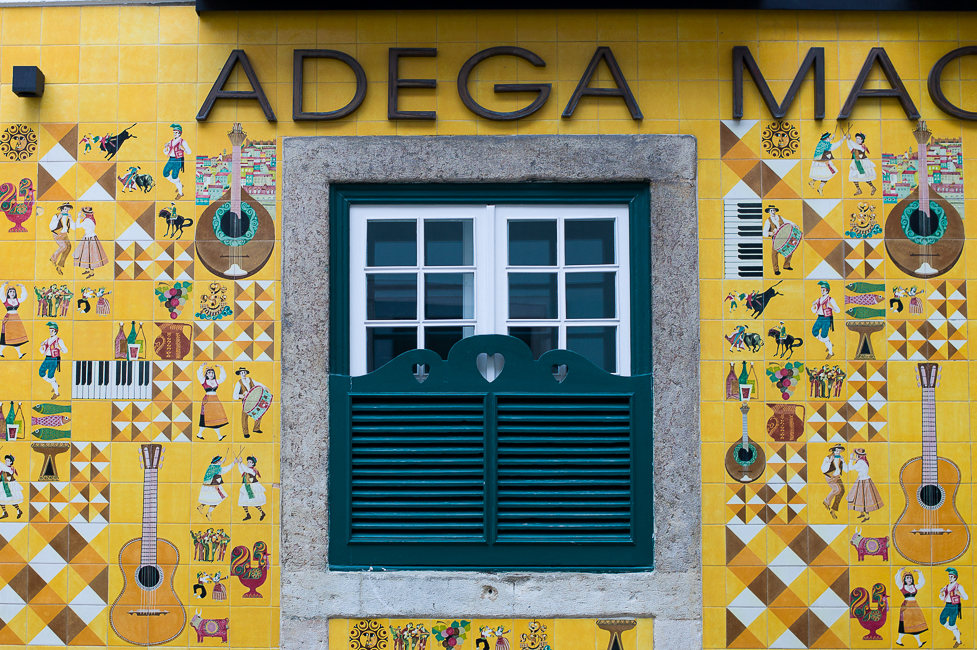
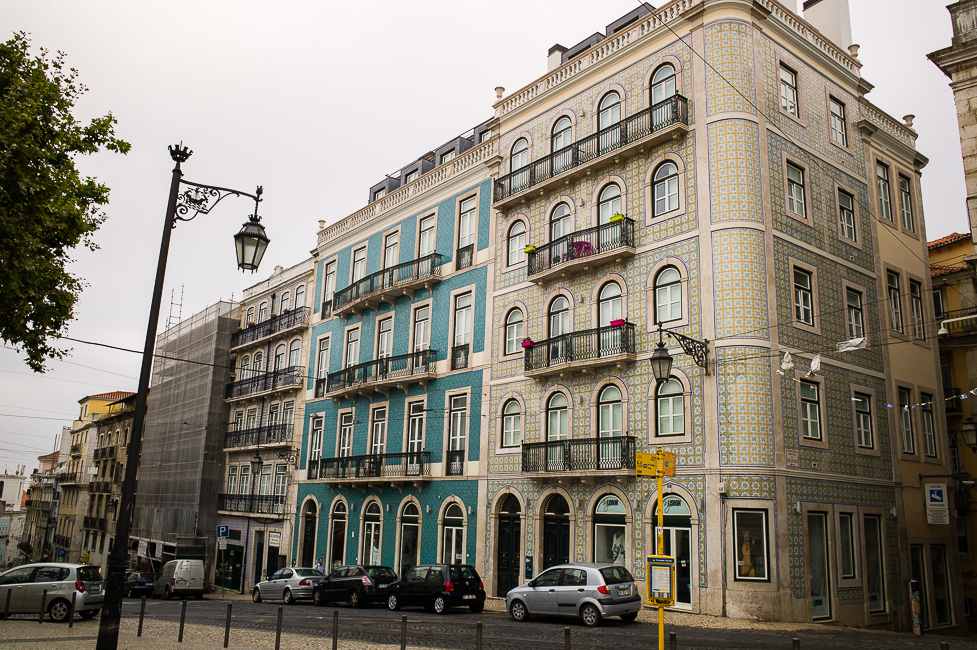
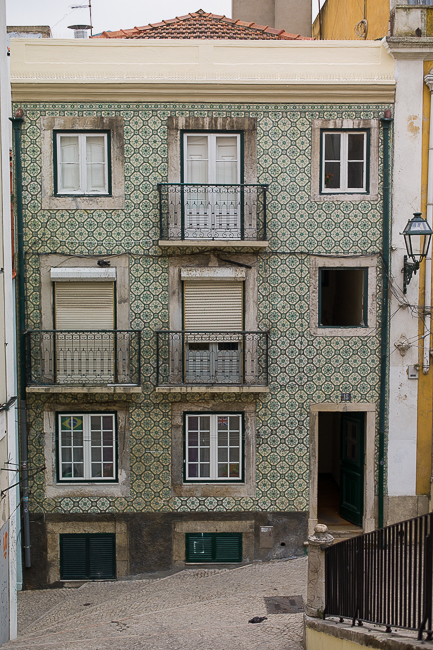
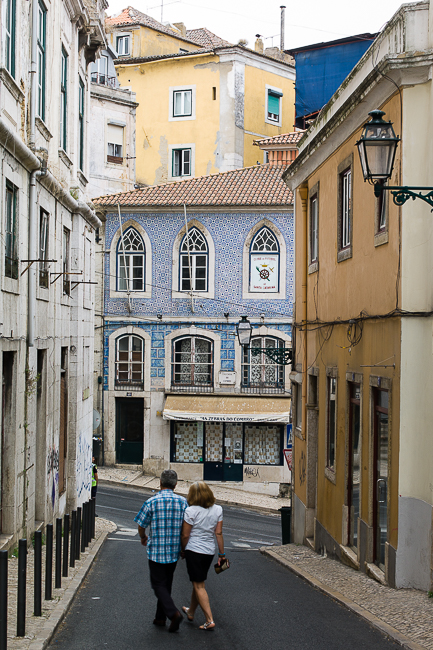
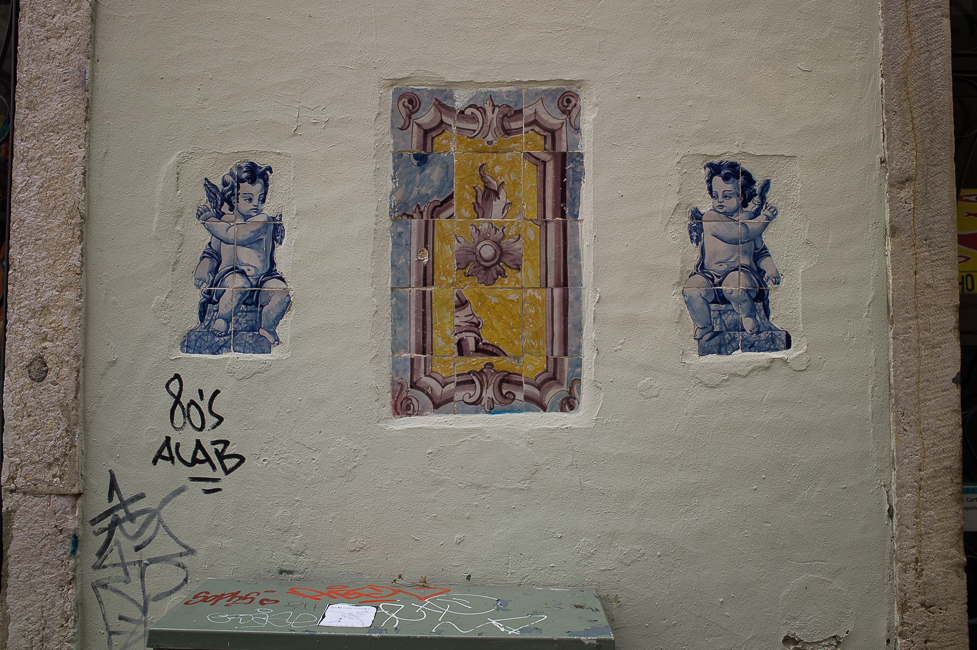
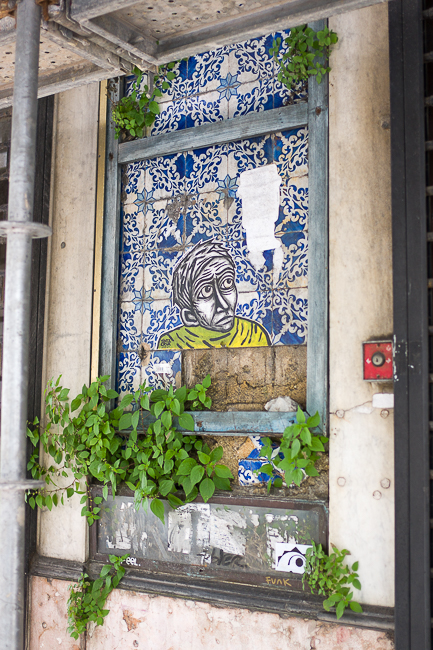
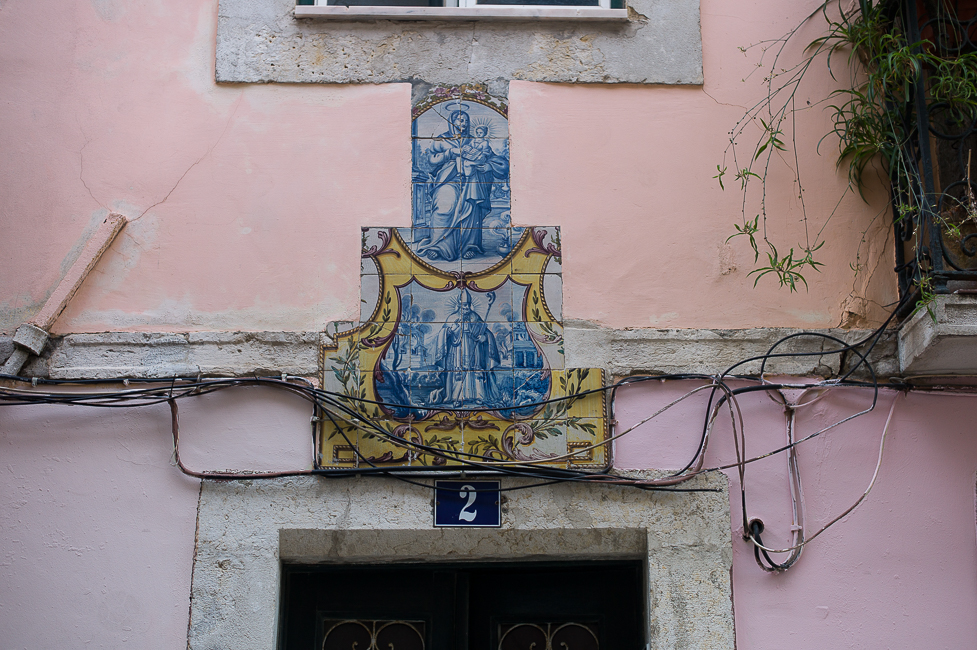
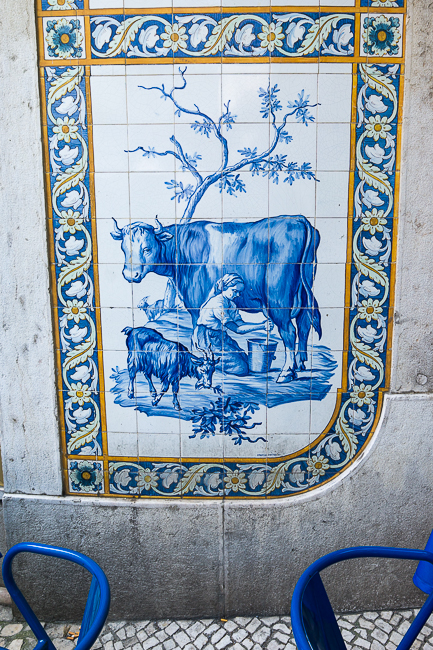
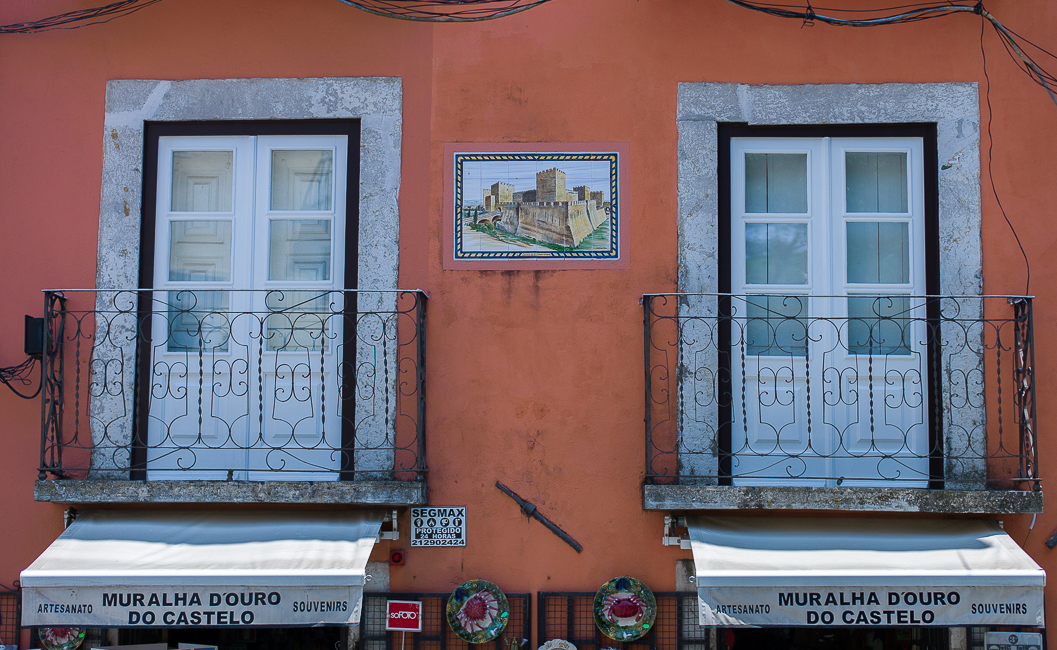
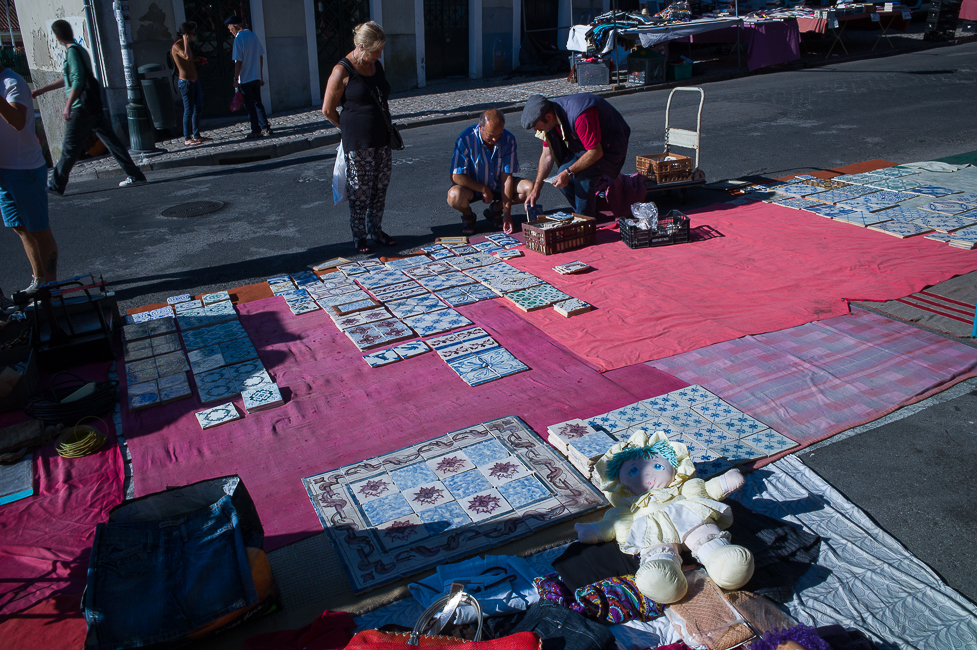
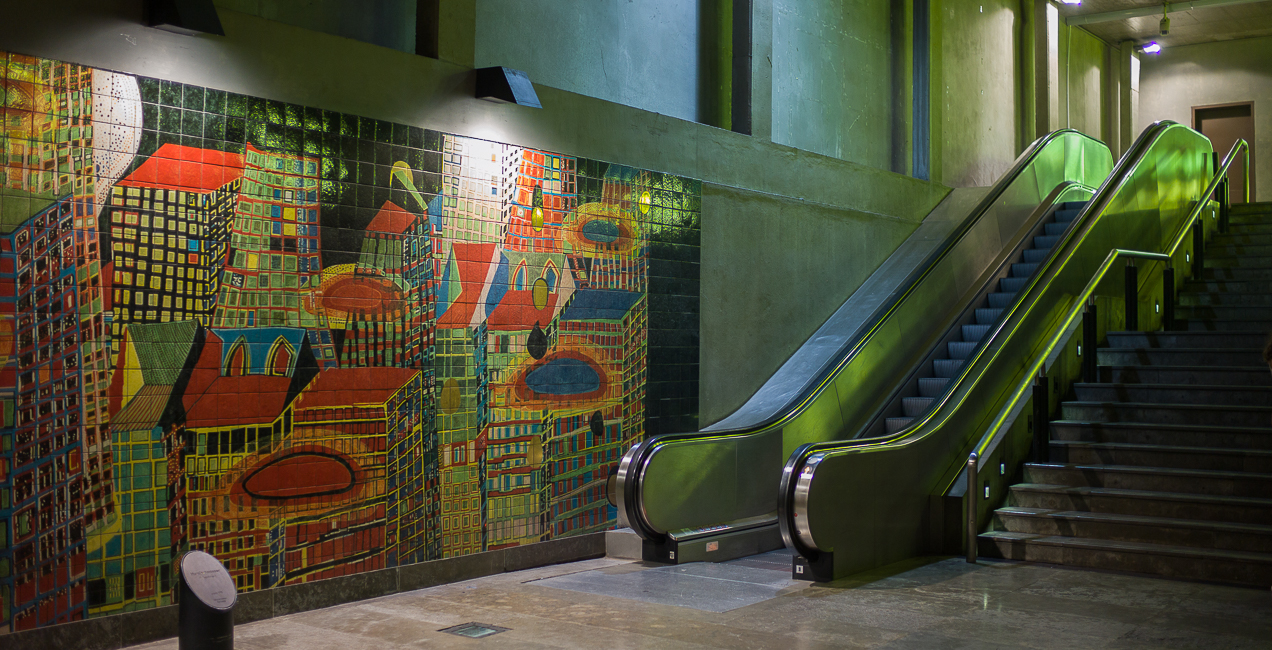
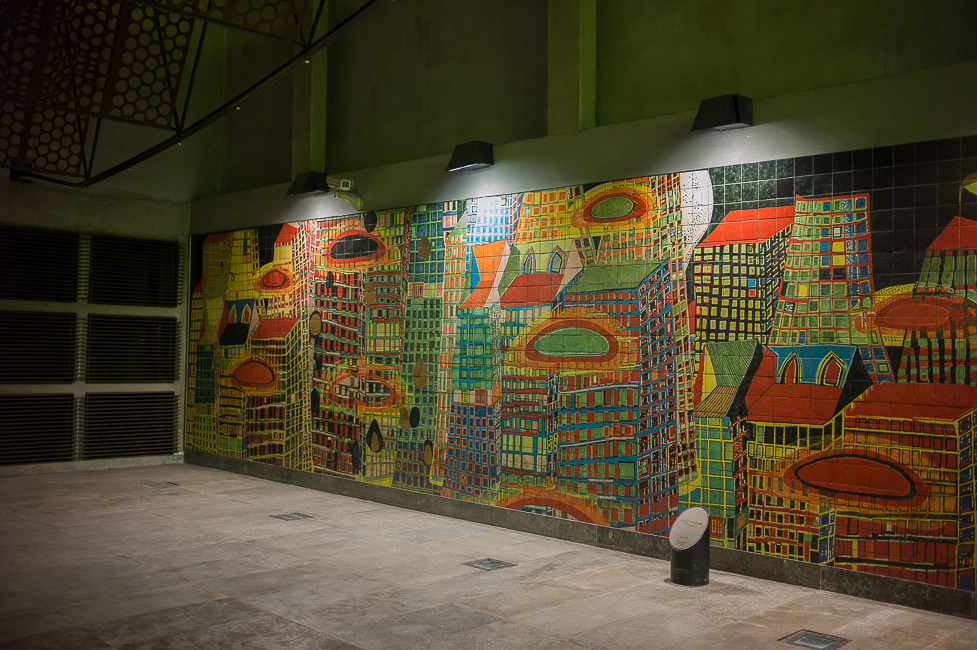
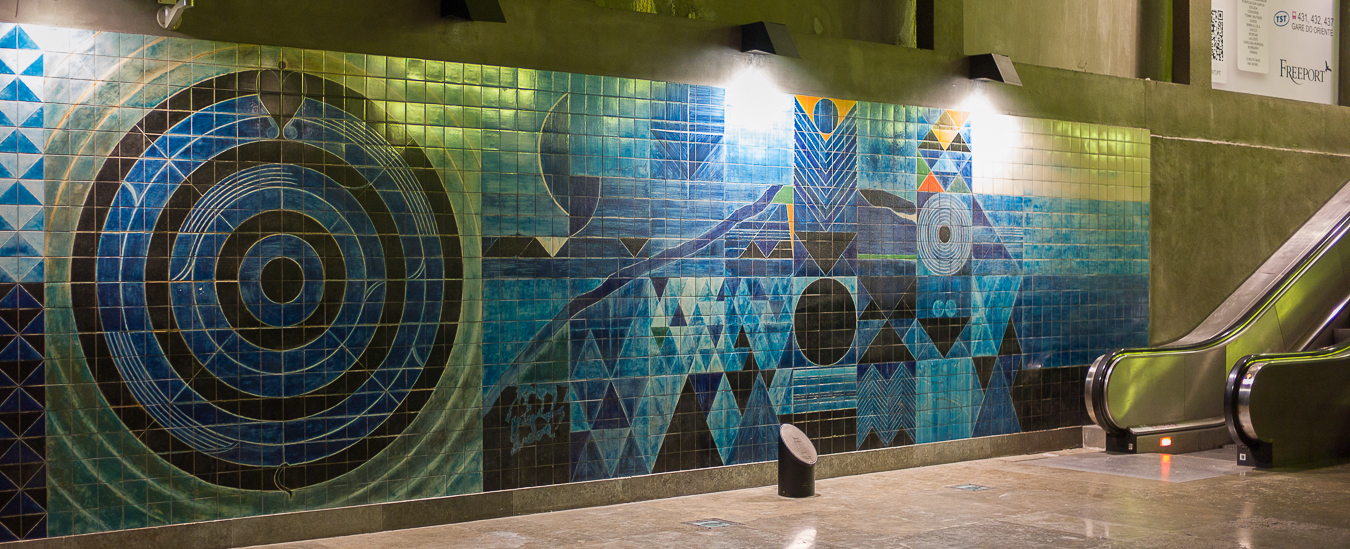
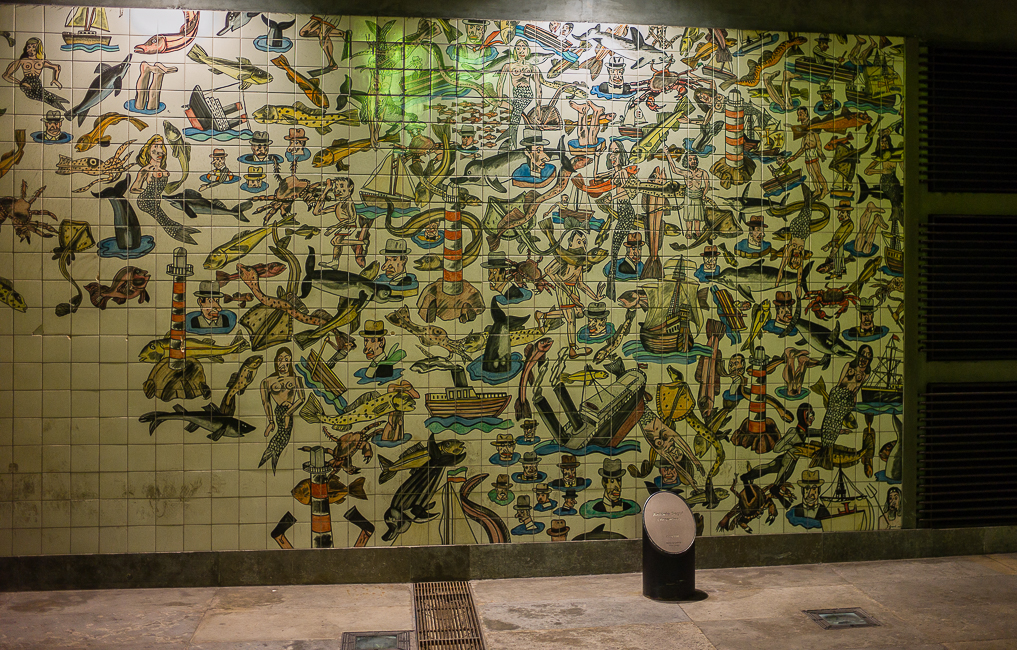
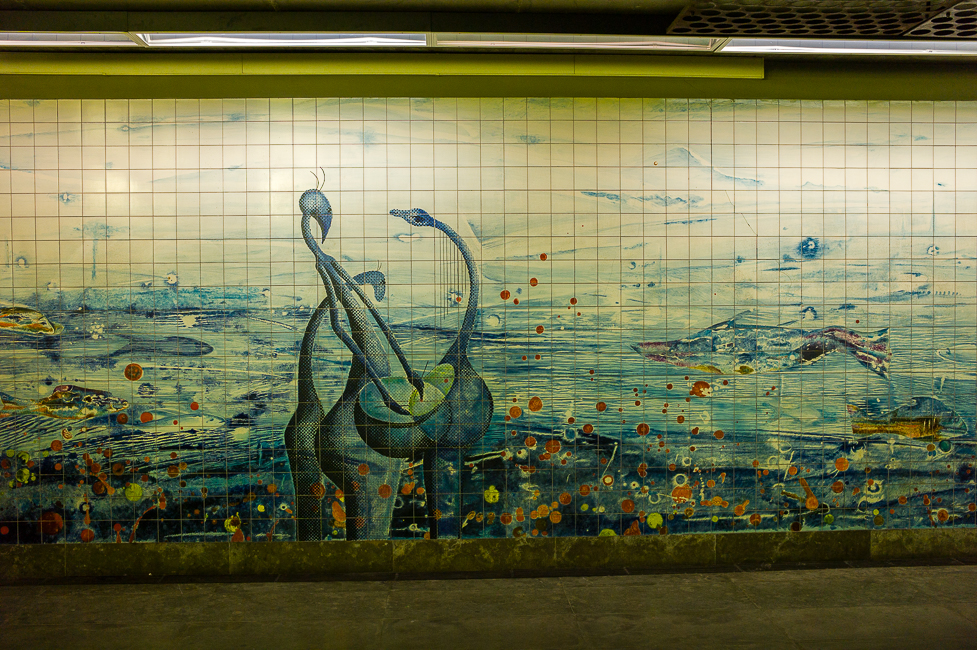
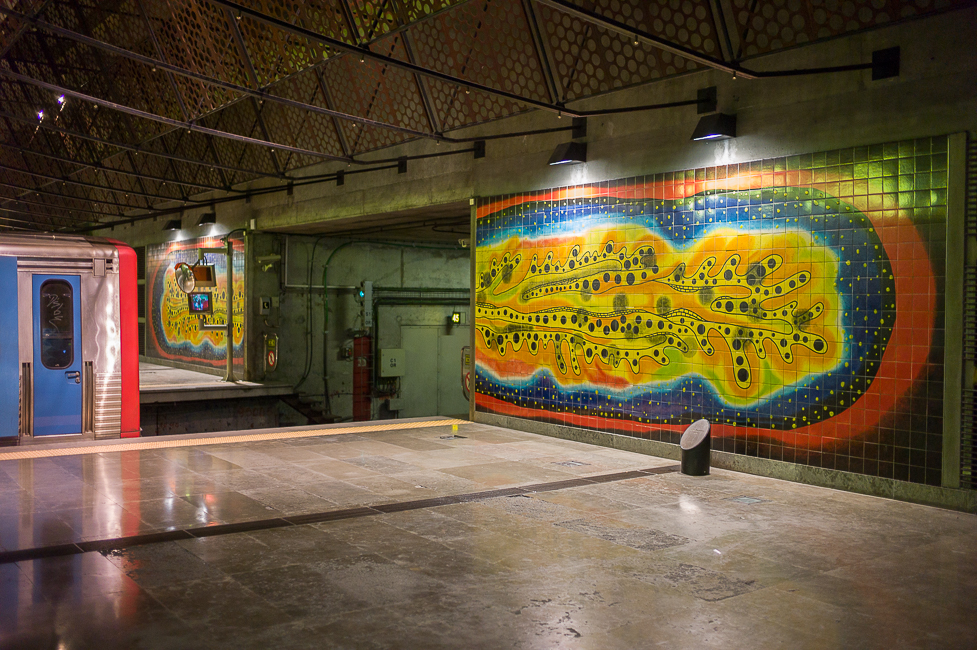



Leave a Reply